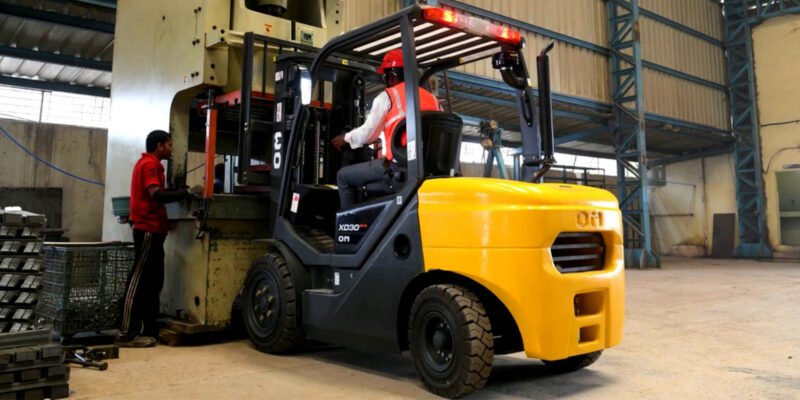For small enterprises, buying used material handling equipment—like forklifts—is an excellent solution for budget-saving. You may find a wide range of forklifts in the used equipment market according to your needs. This reduces the price of purchasing a new forklift, which could otherwise be a costly affair. You may buy pre-owned forklifts for less money and save some significant upfront costs. For equipment like electric and diesel forklifts, used alternatives are available in plenty. Before making a purchase, it is preferable that you evaluate your own needs. You may find various reused material handling equipment in a good shape, that is best suited to your requirements.
A used forklift often carries certain risks since it may be challenging to find out the history of the equipment’s maintenance. Therefore, before you finalize the forklift, you must either have a comprehensive examination or take a trial and operate it once. Now, let us have a look at the checkpoints that will help you assess a pre-owned forklift, before making a purchase.
Checkpoints for assessing used forklifts are listed below:
1. Understand the Implementation or Use of the forklift:
For various uses, different forklifts are available in the market. But what is specifically required by your warehouse or forklift? Is it that you require a forklift with heavy load carrying capacity or light-weight carrying capacity? What products do you need to transport from one place to another? In which area of the warehouse will the forklift be used? Answer these questions for yourself to understand your requirement.
2. Enquire about the Age of the Equipment:
The equipment’s age is a crucial factor to get an understanding of its functional condition. It is possible that for older equipment, it could be difficult to get new components in case the equipment has to be repaired. Forklifts that are relatively new may cost more, making them more valuable than used ones. You need a specialist in this crucial field to check the functionality and safety of all major components.
3. Here is a list of the parts you should inspect before making a purchase:
Test the engine of the forklift. Ask the service staff of an authorized dealer to examine whether all the components are functioning properly or not, and if not, request the cost of replacement.
Battery – Verify that all battery connections are in excellent shape while assessing an electric forklift. Forks – Inspect the blade alignment and search for fractures. Check for holes between links while lifting chains. Check the seatbelt, lights, and horn to see whether they are all working correctly.
4. History of Forklift Operation:
Due to their durability and sturdiness, forklifts are utilized in a variety of settings. While humid surroundings can lead to moisture buildup, cold temperatures can result in a poor reaction, and hot environments can be harmful to fragile engine components. However, forklifts are known to be used in harsh environments, such as forging industries where the temperatures are extremely high, cold storage applications where the forklifts are used in low temperatures below zero degrees, and outdoor applications for products like waste management, material movement outside where the products function under atmospheric conditions like rain, indoor applications, etc. Knowing how things have worked in the past helps you determine the product’s dependability and whether or not you would use it similarly.
5. Current total usage hours
The amount of time a forklift has been in operation might reveal how much wear and tear it has endured. Since most forklifts and also electric forklifts have an electronic display that shows their active hours, or the entire amount of time they have been utilized, it is simple to take note of this. The way the equipment is used affects how long it lasts.


